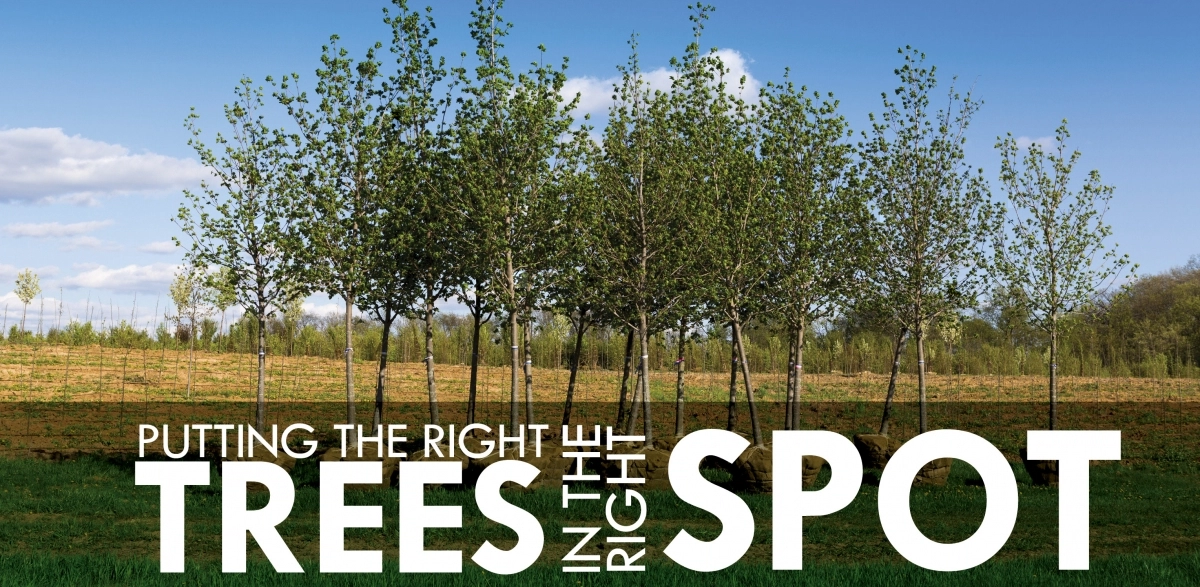
Last Updated July 28, 2023
All of us can relate to hard work. But have you ever stopped to think about how hard trees work every day? Trees are truly one of nature’s true workhorses. They not only work hard to enhance the health and beauty of your property, but they can also help cool homes or office buildings in the summer and fend off strong winds that threaten to damage your property. And they provide you with a nice, shady spot to relax on a nice spring day!
While driving through the countryside, you will notice a variety of trees – various sizes, shapes, colors, and heights. And to add more confusion to mix, you will find different types of trees in the various regions of the map! So, finding the right trees can be a little overwhelming when you consider the hundreds of species and varieties available.
To help you make the right tree to fit your needs, you’ll want to consider several factors, like the soil moisture and pH in your area, as well as determining the purpose of the tree. A little extra planning before planting trees can go a long way.
The Grounds Guys® explain what to consider when selecting the right trees for your landscape.
Table of Contents:
Purpose of the Tree
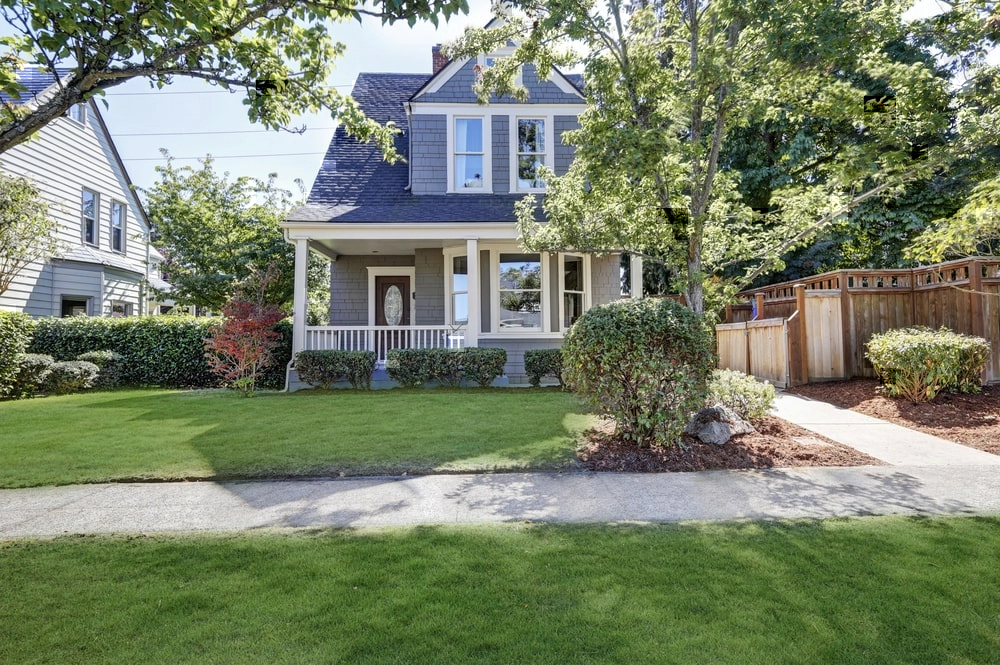
Shade trees can shade your home or business and significantly lower your cooling bills during the hot summer months.
Ornamental trees offer beautiful focal points for your landscape.
Windbreak trees provide a buffer against prevailing winds.
Screening trees provides an economical way to provide privacy and reduce noise.
Fruit trees reward you with seasonal fruits to enjoy.
Related Article: Best Trees for Your Front Yard
Tree Sizing: Height and Width
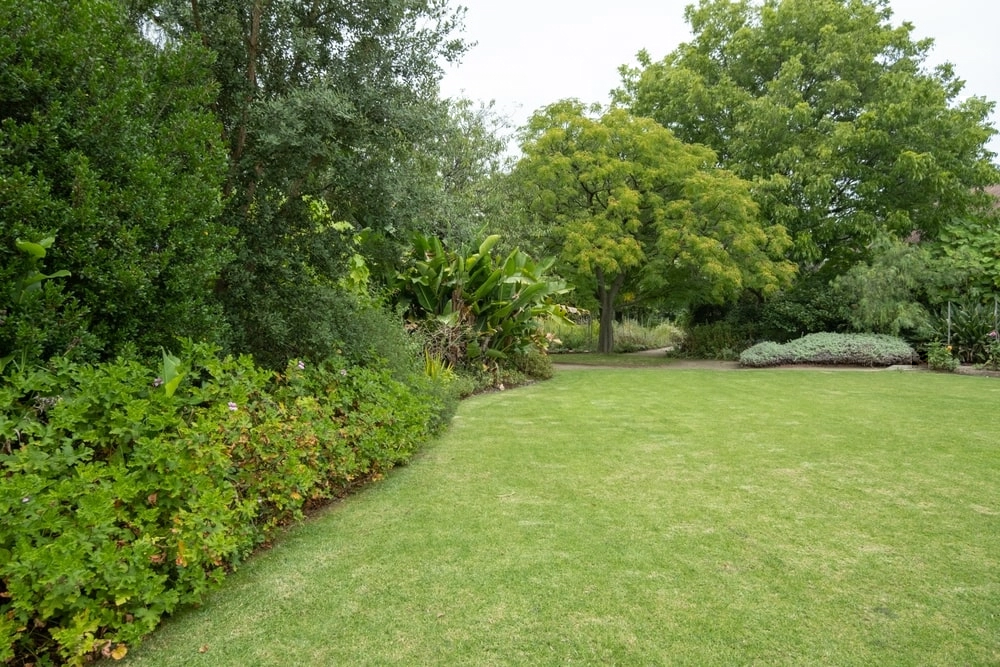
Small trees planted today may be the large trees of tomorrow! So, take into consideration how tall and how wide the tree you choose will be at full maturity. Make sure the tree fits your available growing space without pruning. The mass of foliage and branches growing outward is often referred to as the tree canopy. Tree sizing is especially important under and around utility lines. You wouldn’t want the utility companies to have to cut back your tree’s beautiful canopy because the branches are encroaching on the utility lines.
Tree Shapes
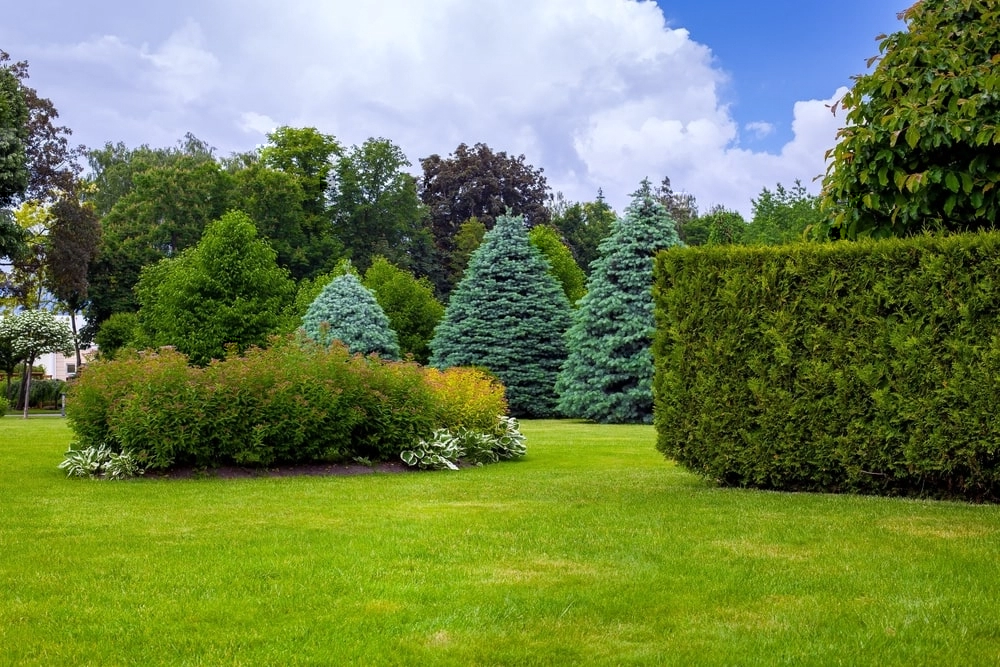
Different species of trees have different forms, like V-shaped, pyramid, oval, columnar, or round. The different shapes add interest to your landscape, but you should also keep their shape in mind when choosing the location. You definitely don’t want the tree growing into your house or business or damaging your foundation. For example, trees with low spreading branches are good screening trees, but not for places where visibility is essential. Columnar trees are appropriate for property boundaries, but won’t provide you with much shade.
Moisture Requirements
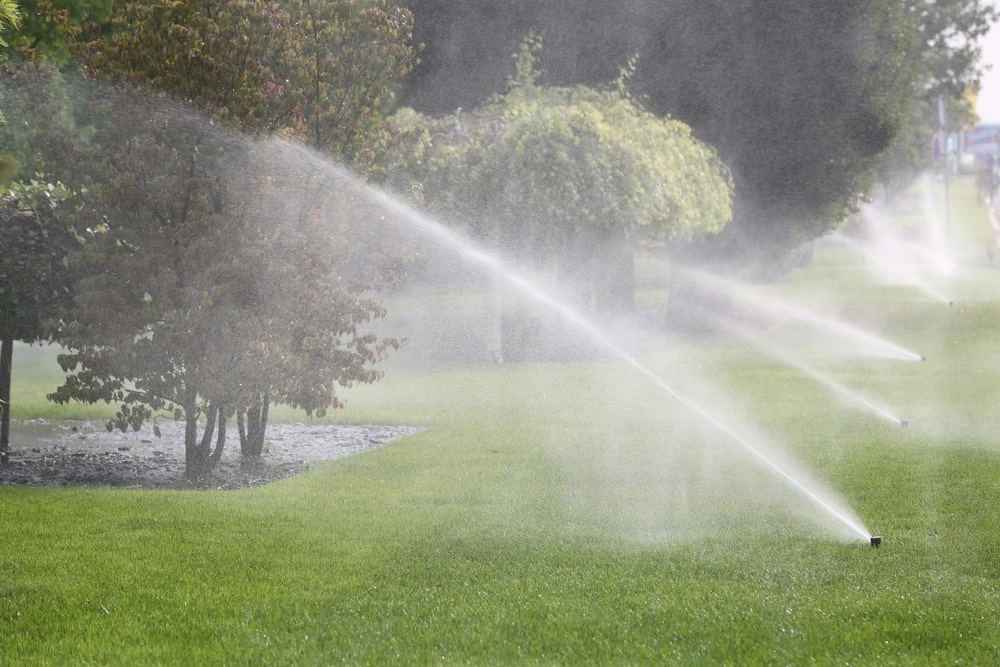
Is your property in an area that experiences drought or overly wet conditions? Drought-tolerant trees are adapted to a habitat that regularly experiences prolonged dry spells. High soil moisture-tolerant trees do better in areas that experience a long rainy season.
Related Article: How Much Water Do Your Trees Need?
Soil pH Requirements for Trees
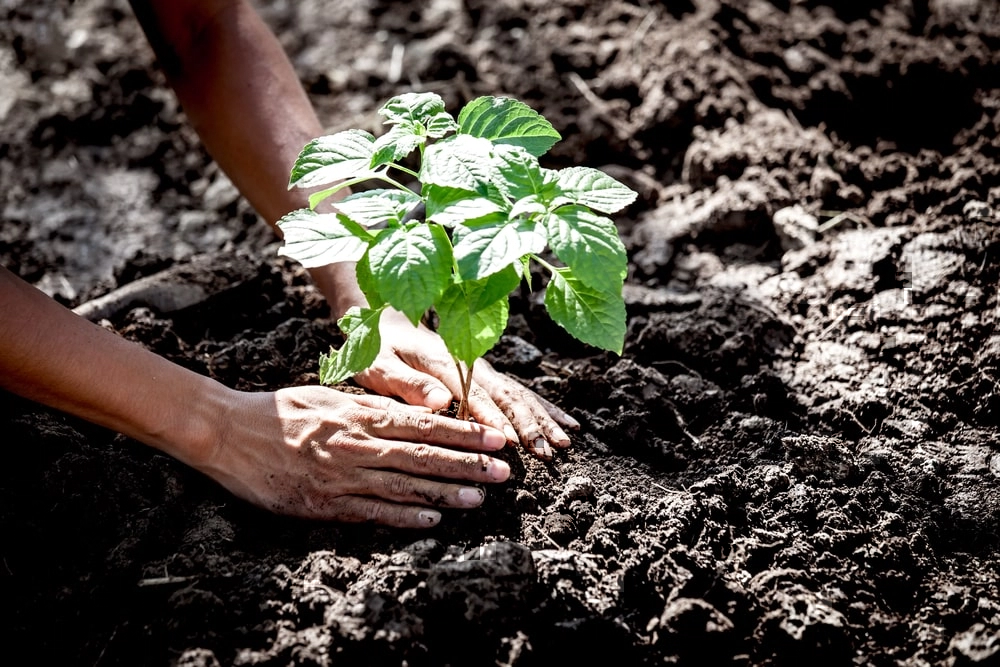
Soil pH is one of the most important properties determining potential tree growth as it influences the tree’s ability to take in nutrients. The pH range of most soils lies between 3 and 9.
Acidic soils have a soil pH of less than or equal to 6.5
Neutral soils have a pH of 7.0
Alkaline soils have a soil pH of greater than or equal to 7.5
Check your soil’s pH levels prior to planting so that you can select a tree species that is adapted to growing under your present soil conditions. Matching your soil’s pH levels to the tree choice can help you have a healthy tree that meets your needs.
Related Article: Soil Analysis: Testing Soil for Optimal Growth
Tree Sun Requirements
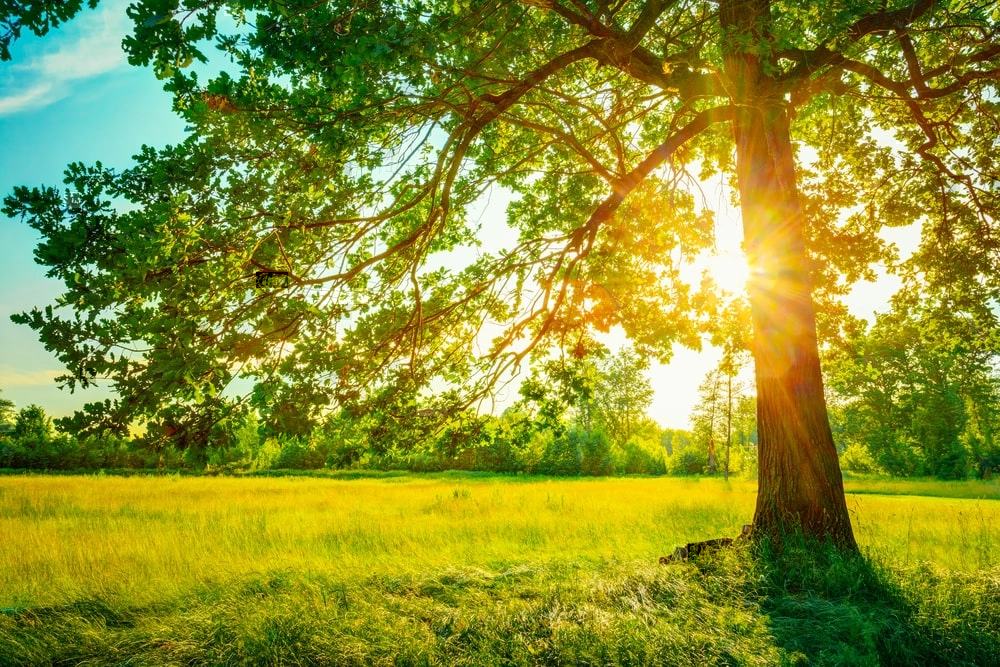
Trees need sunlight to live, but not all trees need the same amount of sunlight. Shade-tolerant and understory trees can grow comparatively well when little light is available. Shade-intolerant species cannot grow well at light levels approaching full sunlight.
Deciduous vs. Coniferous Trees
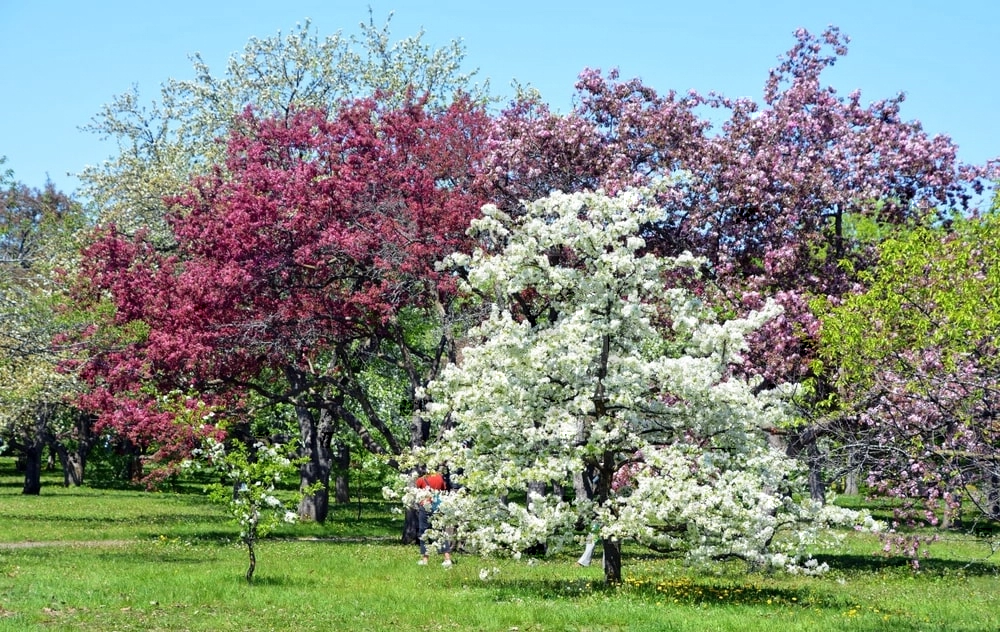
Deciduous trees lose their leaves seasonally, most commonly during autumn. Shedding leaves means that you’ll be spending time raking them up.
Coniferous trees are sometimes called evergreens and most keep their foliage year-round, only losing the older leaves throughout the year.
Professional Tree Services from The Grounds Guys®
Are you looking for a tree to plant? If you find yourself still stumped by the species of tree you should pick for your home or business, request a free estimate from The Grounds Guys. Our landscaping experts offer commercial and residential tree and shrub maintenance services. We can help you decide what trees will work best to beautify your landscape and even lower your energy bills.
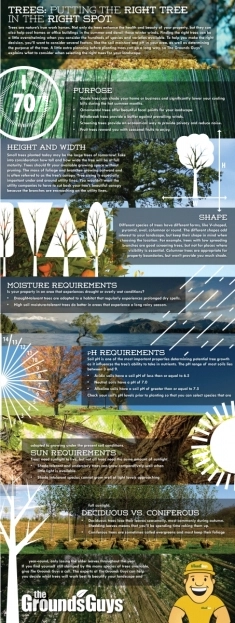
 Click to call
Click to call


